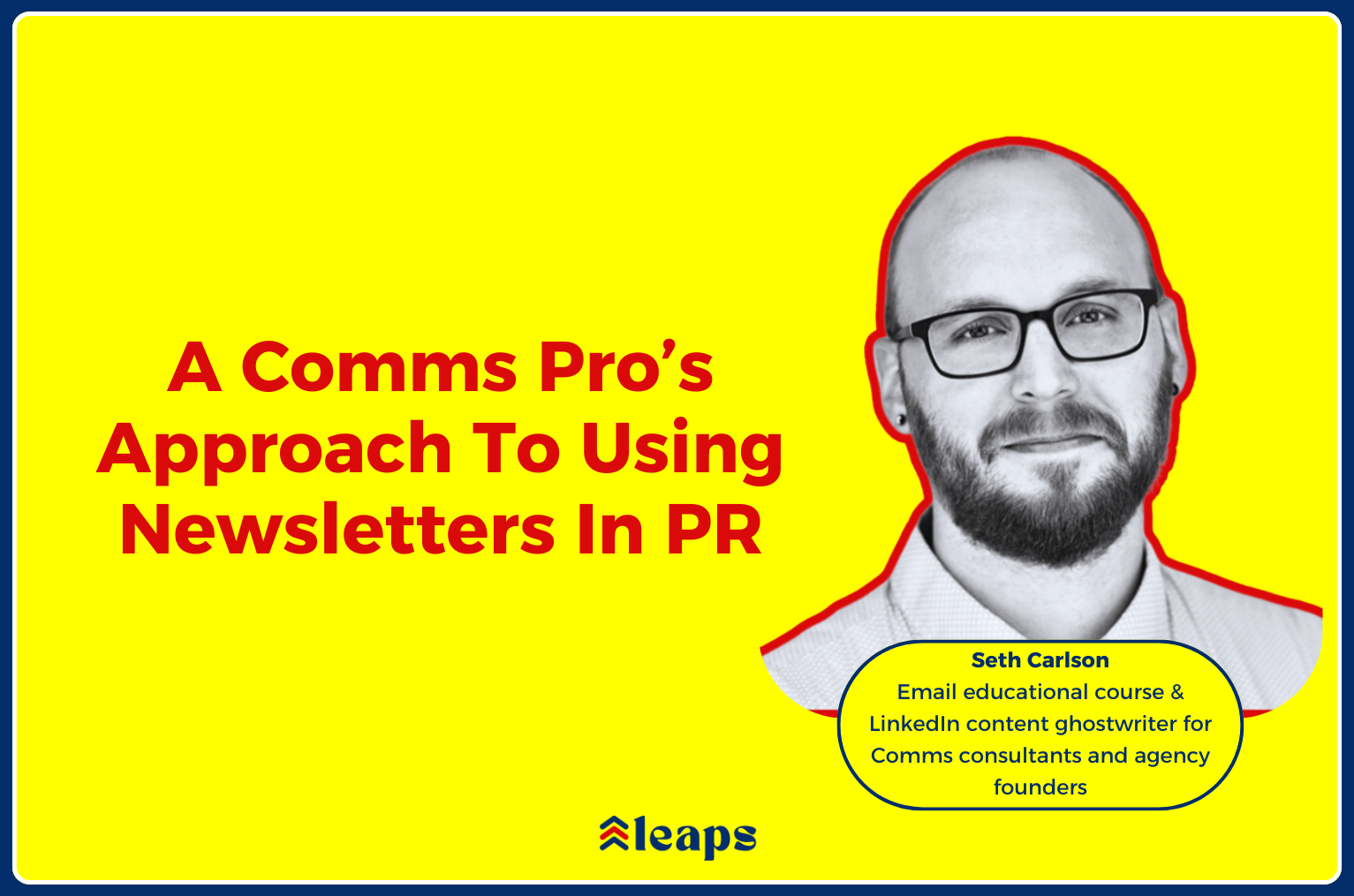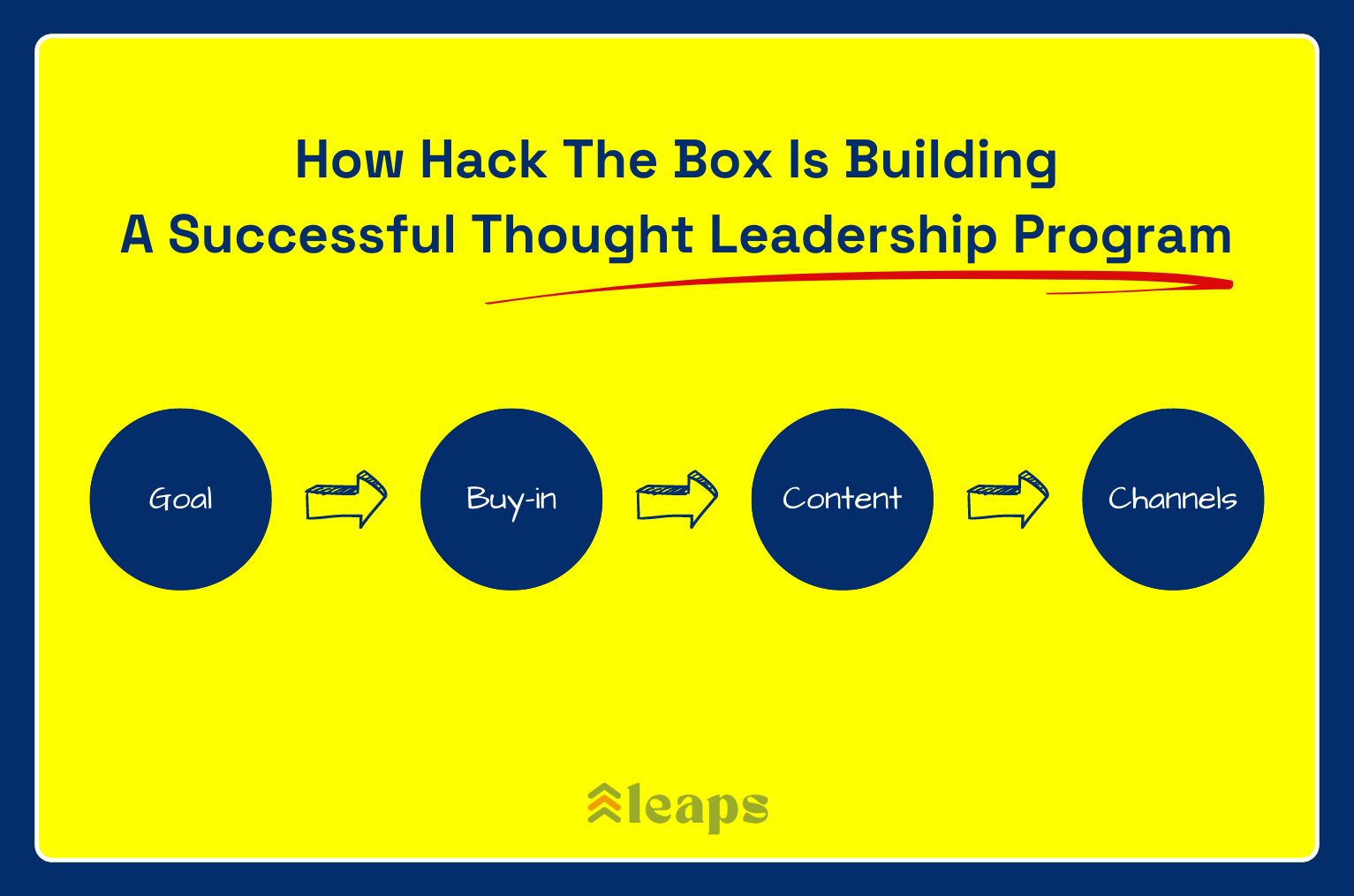
Creating thought leadership content is easy.
But distributing comes with a special kind of hard.
However, that’s also usually when you don’t have a concrete distribution strategy.
In this article, we’ll be sharing how to distribute thought leadership content.
We’ve also interviewed three other content leaders who share insights from their experiences.
What’s inside:
Advice from content leaders: How to do thought leadership marketing
Big shoutout to Shawnie Hamer (Head of Content @ Reveal), Michelle Peterson (Content Marketing Manager @ NetSPI), and Tony Sleva (Content Marketing Leader) for their detailed contributions to this piece.
1. Get leaders to commit to sharing
If you’re executing a thought leadership program or plan, you’re likely not doing it alone.
In most cases, you’re collaborating with subject matter experts (SMEs) to create your content.
And that could mean either you’re ghostwriting for them or just featuring their thoughts.
But in my experience, creating content with or for them doesn’t mean they will share your content after you publish.
And that’s not what you want.
So from the get-go, discuss a co-marketing partnership with them.
Reveal’s Head of Content shares her experience distributing thought leadership this way:

Shawnie Hamer
Head of Content @ Reveal
“If you are doing all the legwork and posting it and publishing it on different channels without the buy-in of the leader and their network, then it’s pretty much doomed to fail.
“The better way to do it is to make sure that you have the buy-in from the people you’re interviewing from day one and clearly outline those expectations.
“Do they have a successful newsletter you’d like to tap for the content? Are they posting daily on LinkedIn and other social channels? Make it clear what you’d like from them before creating the content.
“And the best way to do it is to tap into not only that thought leader and their network, but also the people you know are connected to that person in some way.
“And with tools like Reveal, LinkedIn, and other marketing tools like 6sense, you can see those networks. You can see who these people are connected to.
“And if you see that, for example, someone is often praising or resharing this thought leader’s posts on LinkedIn, share the content with them. See if they would be willing to reshare it. So tap into their connections and their network to get as many eyes on it as possible.”
Shawnie further shared the steps she takes to execute thought leadership marketing:
- “Thought leadership content has to come from customer need, especially in B2B marketing.
“It has to come from something that either the customer is lacking, the customer doesn’t understand, a challenge they’re facing, or, a new feature or strategy you are implementing in your business that can help bring value to the customer.
- “So once that need is established, it’s about finding the people your customers or prospective customers already trust.
“Who are the leaders in the field and in your ecosystem that have been to the promised land? Who are the leaders in the field who have already done what the customer is trying to do? You might not have earned the trust of your audience on this topic yet, but that leader has, so partner with them.
- “Then it’s about planning and getting organized with that leader. So, as I said before, make sure that the expectations are really clear.
“Who’s going to do what and when? Where is it going to live? How is it going to live? What channels will it be shared on? Will there be follow-up content? Will there be leads attached to this piece of content?
“And if so, what are the expectations around that? Make sure all of those bases are covered so you’re not only building trust with your thought leader, but you’re also building trust with their network as well.
- “Then create the content and get everything prepared for the thought leader. Make it as easy as possible for them to hold up their end of the bargain. If you’re expecting them to share it in a newsletter or on a post, write those things for them. Make video clips for them.
“Give everything to them to make it as light of a lift as possible. And be sure that you’re doing the same with any other people in their network that you’re hoping to help evangelize this piece of content.
“If you know there are five or six other thought leaders that are strong voices on this particular topic, get them to engage with the content.
“Talk to them prior to the publication and ask them if they’d be willing to talk about it, to promote it, or even to argue it. And then see where you can help — if you can create posts in their voice, the likelihood that they’ll share it goes way up.
- “And lastly, follow up. Track how the content performs and adjust as needed. If you’re seeing a lot of traction, brainstorm ways that you can create other ways to engage the audience. For example, maybe an event or an enablement session or a playbook that can help amplify the initial conversation that was started in the first piece of content.”
2. Consistently address topics in vogue
One surefire way to kill a thought leadership piece before it even gets published is to create content on irrelevant topics.
And if you’ve ever created content on irrelevant topics, you’ll know this firsthand.
This was what NetsPi’s content marketing manager experienced when she worked on a campaign where they covered topics that had passed their prime and executed without consistency.

Michelle Peterson
Content Marketing Manager @ NetSPI
“We conducted local media outreach to all of the destination cities and the location of our client.
“We learned two lessons throughout that campaign: 1) Public relations works well when practised regularly, and 2) Beware when a hype cycle for something has passed.
“In my position now, I’m focused on equipping demand generation teams with content to serve up in paid efforts.
“From this perspective, the steps I take to do thought leadership marketing involve:
“1) Ideating topics in tandem with our subject matter experts.
“2) Distilling topics into questions to ask thought leaders to create an engaging narrative.
“3) Conducting interviews via whatever platform is easiest for the people I work with.
“4) Revising responses into a narrative for public viewing.
“5) Working with our creative team to bring content to life on our website.
“6) Providing recommendations for top-performing content to email marketing, paid media, internal communications, and social media.
“Equipping our team with any assets they need to share the content, whether it’s a specific image or a description that fits a character limit.”
3. Use LinkedIn thought leadership ads
LinkedIn thought leadership ads have become one of the best content distribution tactics in recent times.
If you’re not sure what it looks like, here’s an example:

It’s an ad that looks like a normal, organic post.
With the right audience targeting, budget, and content, you’ll be reaching your target audiences with content they care about.
When I asked content marketing leader Tony to share his experience with promoting thought leadership content, he narrated how he’d previously worked for a brand and used a traditional method to distribute content.
All that effort was futile until they turned to LinkedIn thought leadership ads:

Tony Sleva
Content Marketing Leader
“As an alternative, I worked with the Digital Demand team to get thought leadership content out as LinkedIn’s new thought leadership ads. Those were effective.
“It’s an effective way to reach a broader audience. You’re hitting all of the different major avenues of traffic.
“I think the ideal situation is to create a 1000-word post that ships on the blog and the wire at the same time and then also put out a shortened version as a LinkedIn thought leadership ad. And also socialize on X.”
Distribution where your audience is
Nothing works in marketing when audience targeting goes wrong.
So with all the advice and stories we’ve shared in this piece, I’ll add it’s important to find places where your target audience/ICPs hang around and put your content there.
If it’s LinkedIn, engage with your ICPs and share your content.
And if you have the budget, throw some thought leadership ads in the mix.
LinkedIn is just one channel, though. There are several others.
What’s important here is to do proper research and pinpoint which ones your target audiences are on and engage them there with content they want to see.
Hi, I’m Victor Ijidola, co-founder @ Leaps, an easy way to get insights from your SMEs — no calls needed — and turn them into detailed, expert-led content briefs and outlines. If we're not connected yet, I'd love to meet you! 🙂



